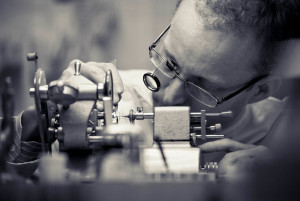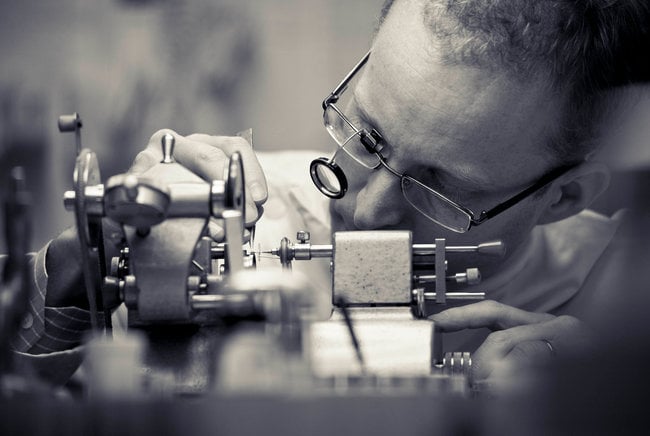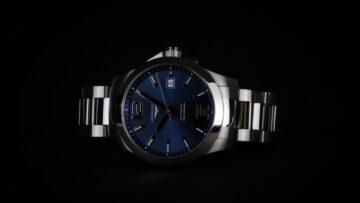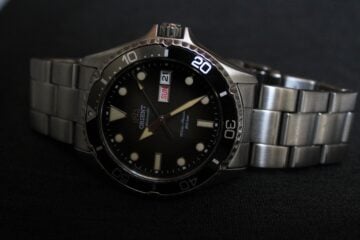
An old article in watchpro.com shares how an 82 year old George Daniels enlisted the help of Roger Smith to create a new series of Daniels watches. Although Daniels had “plenty of ideas and drive,” he was not physically able to create the time pieces himself. Smith explains in the article that he had worked with Daniels before, but that the older watch maker had in mind a whole new wristwatch from Daniels. The company is now almost ready to launch the first piece in their new line of thirty five new watches. George Daniels was thankfully able to view the prototype a month before his death. In his article, Smith explains why he believes that watch making can be revived in Britain.
An article from the New York Times claims that the British are doing just that, and even features Smith in his workshop in their photos. In the post, Felicia Craddock explains that the English clock and chronometer makers “ruled the horologic world” for about two hundred years, from the middle of the 17th century until the Swiss recently took over the throne. The article drops some of the bigger names in British watchmaking’s golden era, John Harrison, Thomas Tompion, Thomas Mudge, John Arnold, and Thomas Earnshaw. Craddock adds, “But a small band of English watchmakers is staging a comeback for the tradition of British horology.”
Of course, the most obvious forerunners of the new British invasion of watchmakers is the larger brands which are just taking their lead on the international stage. Among these are such names as IWI, Bremont, and Dent, the Royal watch maker which was just recently brought back to life. As Craddock explains, however, the core of this revolution of time piece makers is the smaller, independent companies which create only tens of watches per year as opposed to the hundreds created by the larger companies. RW Smith watch company fits into this category.
As Smith explains in his article, “We only make about 10 watches a year. While there has been a resurgence of people in Britain wanting to make watches, I wouldn’t say it’s a watchmaking industry, more of a scene, an interest resurgence. Lots of old names have been pulled back up.”
Smith goes on to explain how odd he feels that it is that there is no true connection between the original watchmakers and states that the British companies are still relying on the Swiss watchmaking industry. Smith claims, “I wouldn’t want to brag, but we are the only ones actually making watches in Britain.” He elaborated that there are, “seven of us,” and explains that is a large number for the output that they have. Smith says that the reason for this is that they are all skill based. Smith’s team is made up of watchmakers of various ages, and they even took on a twenty two year old apprentice who had never handled a watch before. Smith shared how pleasing it has been for him to observe the younger man as he learned and built his interest in watchmaking.
Craddock explained that many of the new watchmakers owe they inspiration to Smith’s mentor, George Daniels, whom she calls “one of the greatest horologists of his time.” She mentions Roger Smith and names him as “Mr. Daniel’s pupil,” sharing that his seven-person workshop on the Isle of Man manufactures about ten watches each year. “Each is of a technical precision and elegance that few in the mechanical watchmaking industry can match — a feat that ensures his client waiting list is two years long, despite prices that are often in six figures.”
Smith says he definitely believes that it is possible to revive watchmaking in Britain and added, “In the future I will continue to produce watches under my own name and we’re running my name and George Daniel’s together. I certainly see a very good future. I have plans to increase production to maybe 20 or so pieces a year.”





